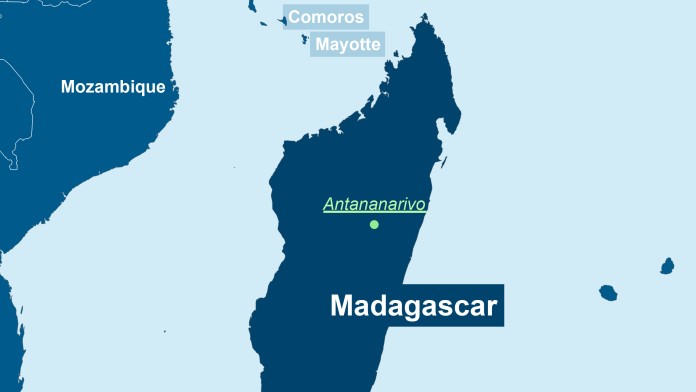
As of: 11/2022
Madagascar has unique biodiversity and is of paramount importance for global biodiversity. This applies to both its extensive flora and fauna and its remaining forests. The native rainforests provide a home for irreplaceable, endemic species. But the natural resources on this fourth largest island in the world are under considerable pressure. This can be traced back to the fact that many of the very poor use charcoal for cooking and heating. The charcoal is extracted by forest clearance. Agricultural practices are also unsustainable. Soils are increasingly depleted and degraded. To counteract this, KfW combines environmental protection and nature conservation with measures to combat poverty, especially in the neighbouring communities of the protected areas.
| Project title | Madagascar national park investment fund |
|---|---|
| Commissioned by | Commissioned by Federal Ministry for Economic Cooperation and Development (BMZ) |
| Country/Region | Madagascar |
| Project partners | Madagascar National Parks (MNP) |
Madagascar is a biodiversity hotspot: the island is home to around 5% of all species, despite making up less than 0.5% of global land mass. Nearly three quarters of its animal and plant species are found only in Madagascar; they are endemic. However, this natural paradise is under serious threat. Forests are becoming steadily smaller and ever fewer. Since the turn of the millennium, on average more than 1% of the forest area has been lost each year. It was the victim of deforestation for agriculture or the extraction of charcoal. Valuable precious woods are also harvested illegally. Poachers seek rare species such as lemurs and turtles, and intruders mine gold and diamonds.
The pressure of use is also so high because Madagascar is one of the poorest countries in the world. More than three quarters of the population are considered poor. Agriculture and mining are two of the most important economic sectors.
The island’s resources are not only threatened by unsustainable use, but also by climate change. A persistent drought in the south is forcing many people to move north.

To break the vicious cycle of natural destruction and poverty, KfW is pursuing the goal of linking conservation of protected areas and their economic development. In its projects, it ensures that the interests of the communities near the natural parks are protected and that poverty is reduced. This is because the preservation of biodiversity is also a livelihood for the population.
Madagascar has 123 protected areas with a total area of over 7 million hectares. One third of these are managed by the organisation Madagascar National Parks (MNP), which faces a number of challenges. The conservation areas, some of which are small, are spread across the country, and the park administration lacks personnel and funds. The National Park Administration also needs international funds for efficient management. KfW is supporting MNP on behalf of the Federal Ministry for Economic Cooperation and Development (BMZ) with EUR 12 million until 2022 and is thus continuing earlier phases of support.
The project not only includes improved park management, more infrastructure and staff, but also takes into account the interests of the people in the neighbouring villages. What this means in concrete terms can be seen in Ankarafantsika National Park in the north-east of the country. It has received the highest level of protection. Hunting and logging are prohibited. Nevertheless, the local people benefit from the national park. It retains rain water and is therefore an important water reservoir for the adjacent rice fields.
To ensure that the local population directly benefits from the protected areas and can help determine how they are managed, they have representation in the park management committees. In addition, jobs are primarily allocated to local residents, for example the majority of patrols to monitor the national park. The neighbouring communities also receive a portion of the admission fees. In 2020 alone, the villages near all 123 protected areas received a total of around EUR 1.4 million – including salaries. The total is lower than in previous years, as tourism generated less income due to the pandemic.
The local population not only profits from the income from the parks and tourism, but also from the preservation of the nature that creates the basis for their livelihoods in the long-term. Apart from the cash flow from salaries and tourism, the municipalities were supported by 430 micro-projects in 2020 alone. These include, for example, the provision of agricultural equipment, improved seeds, beehives and the building of social infrastructure such as schools or wells.
Fire protection strips were created in the natural parks and boundary markings were repaired. In 2020, forest losses fell by half compared to the average of the previous five years. In 2021, the rate rose a little again, but was still 30% below the previous years.
Together, the employees of the national park were able to carry out a large part of the planned patrol and monitoring tasks in the planned protected areas with the local population. The patrols provide effective protection against poaching, illegal logging, grazing and other unauthorised uses. During the inspection rounds, data is collected and fed into a database via smartphone and tablet. All of this is done in the conviction that conservation can only be effective in the long term if the local people are convinced of its significance and take responsibility for the conservation of their natural resources.
The project contributes to the achievement of these following United Nations Sustainable Development Goals: